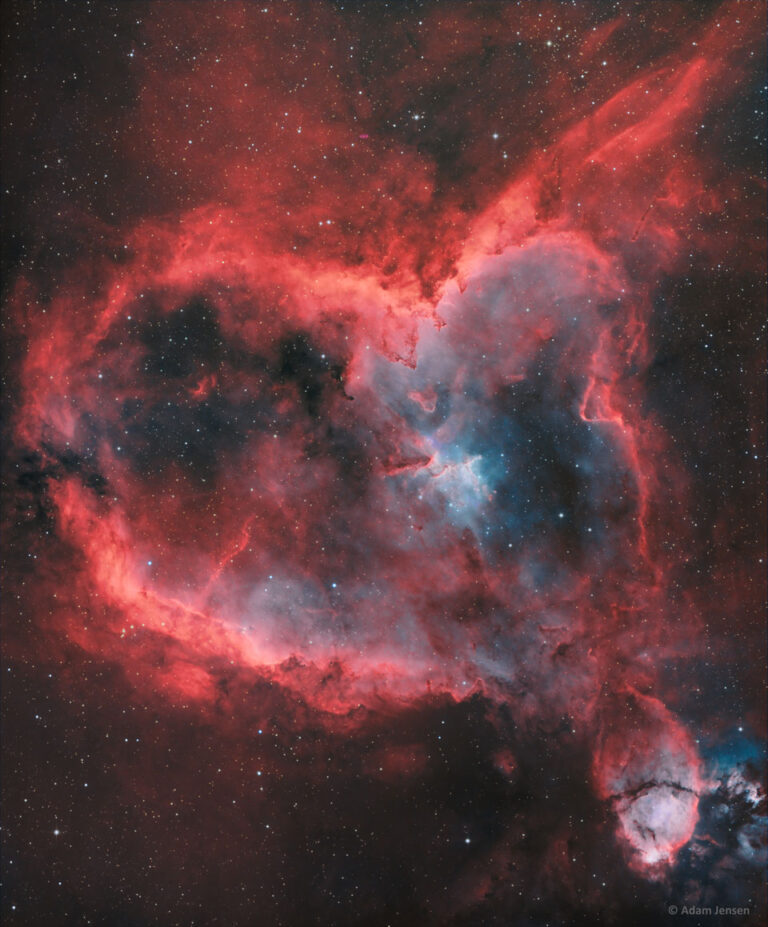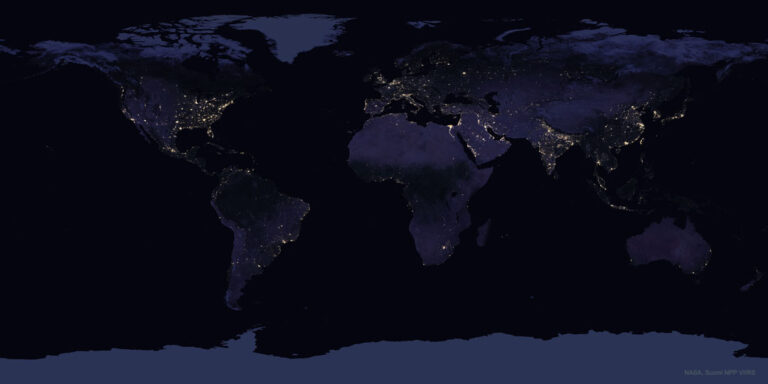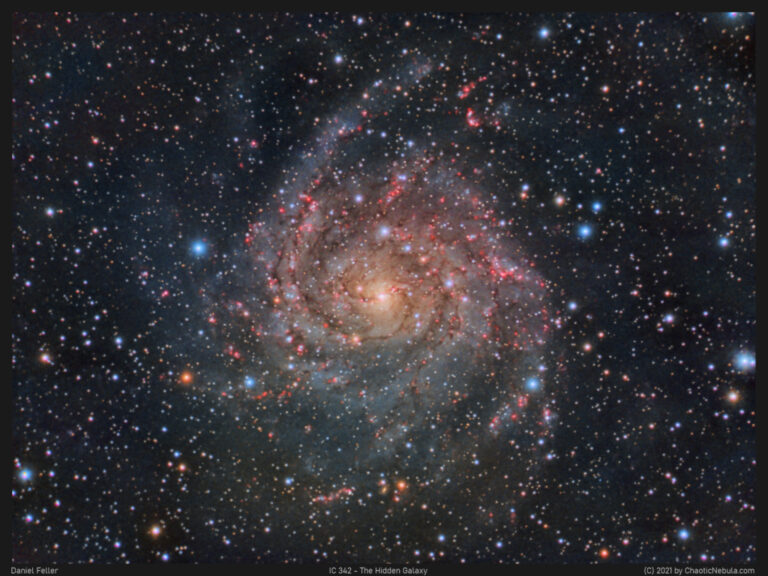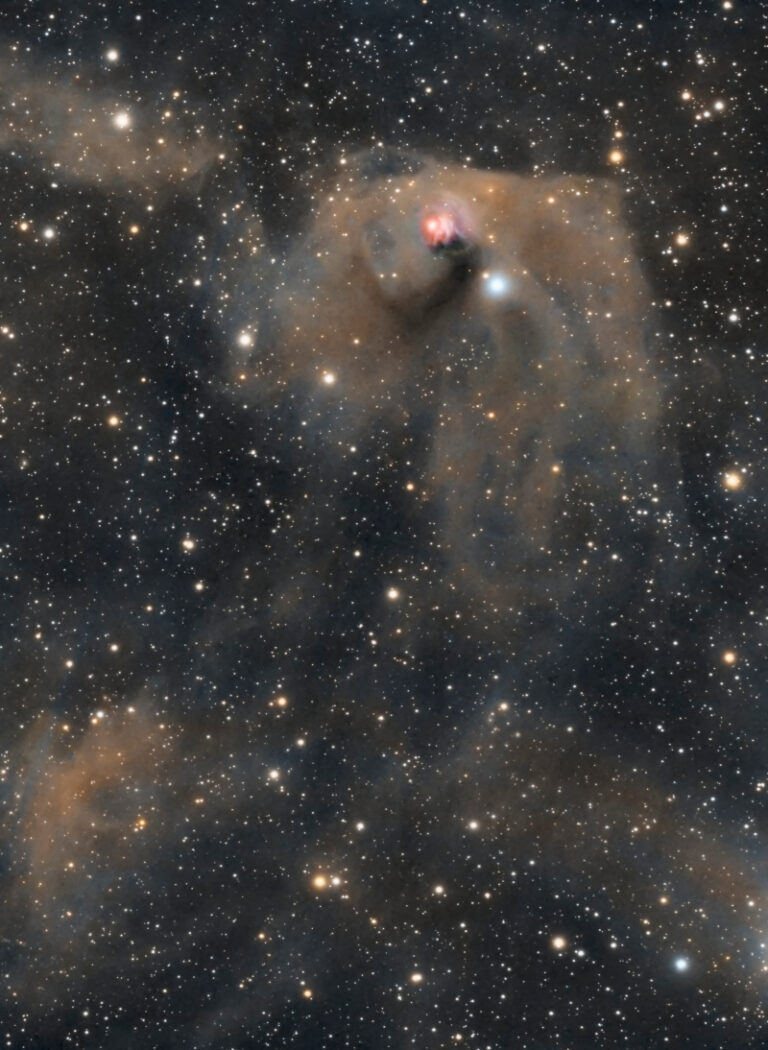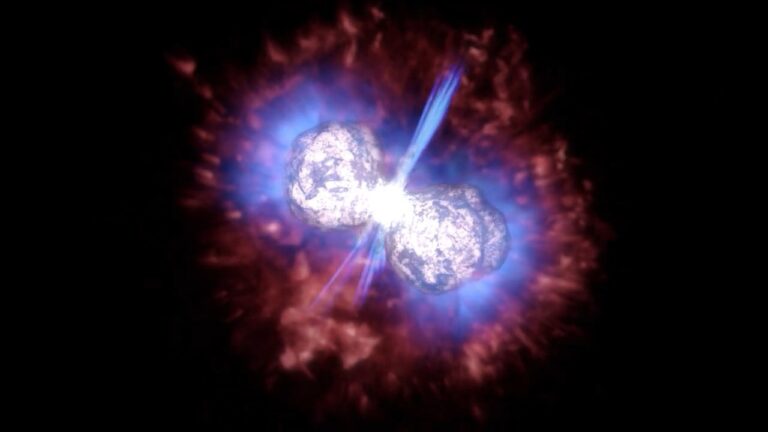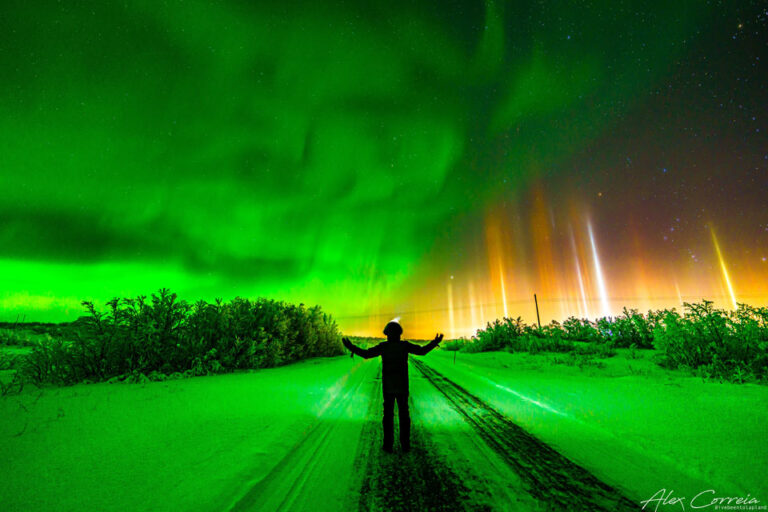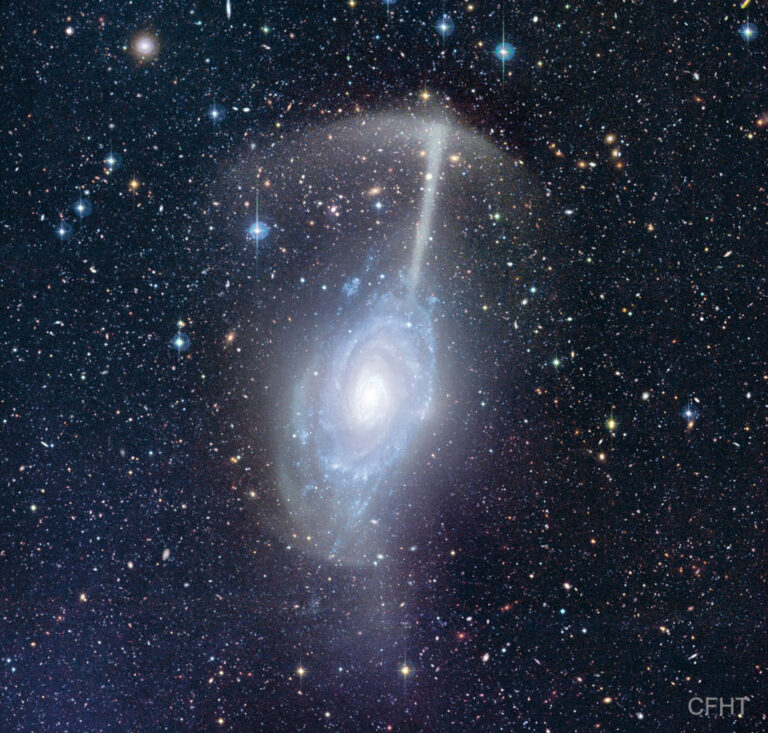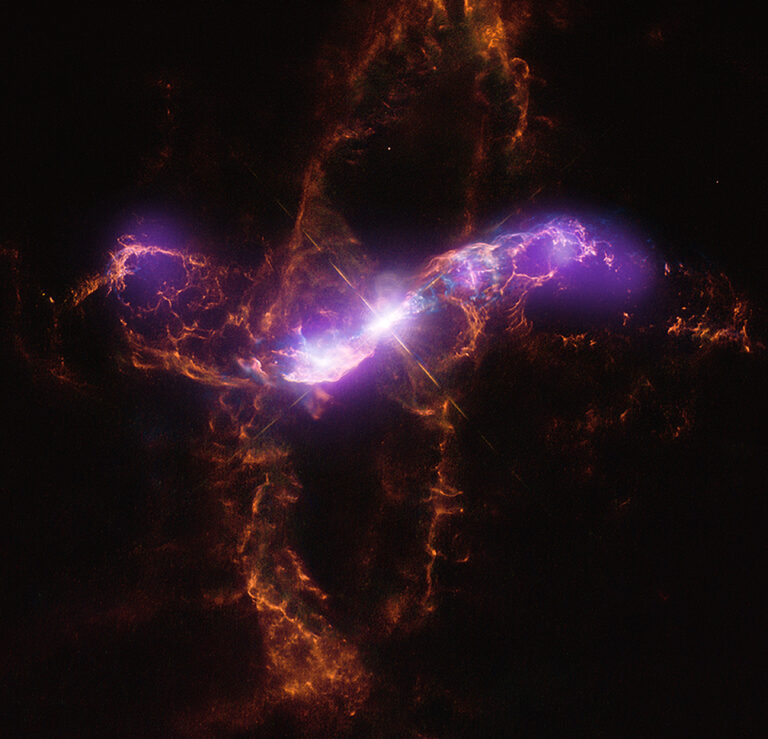心脏星云的核心
2022年2月14日 In the Heart of the Heart Nebula Image Credit & Copyright: Adam Jensen Explanation: What excites the Heart Nebula? First, the large emission nebula dubbed IC 1805 looks, in whole, like a human heart. Its shape perhaps fitting of the Valentine’s Day, this heart glows brightly in red light emitted by its most prominent element: excited hydrogen. The red glow and the larger shape are all created by a small group of stars near the nebula’s center. In the heart of the Heart Nebula are young stars from the open star cluster Melotte 15 that are eroding away several picturesque dust pillars with their energetic light and winds. The open cluster of stars contains a few bright stars nearly 50 times the mass of…

